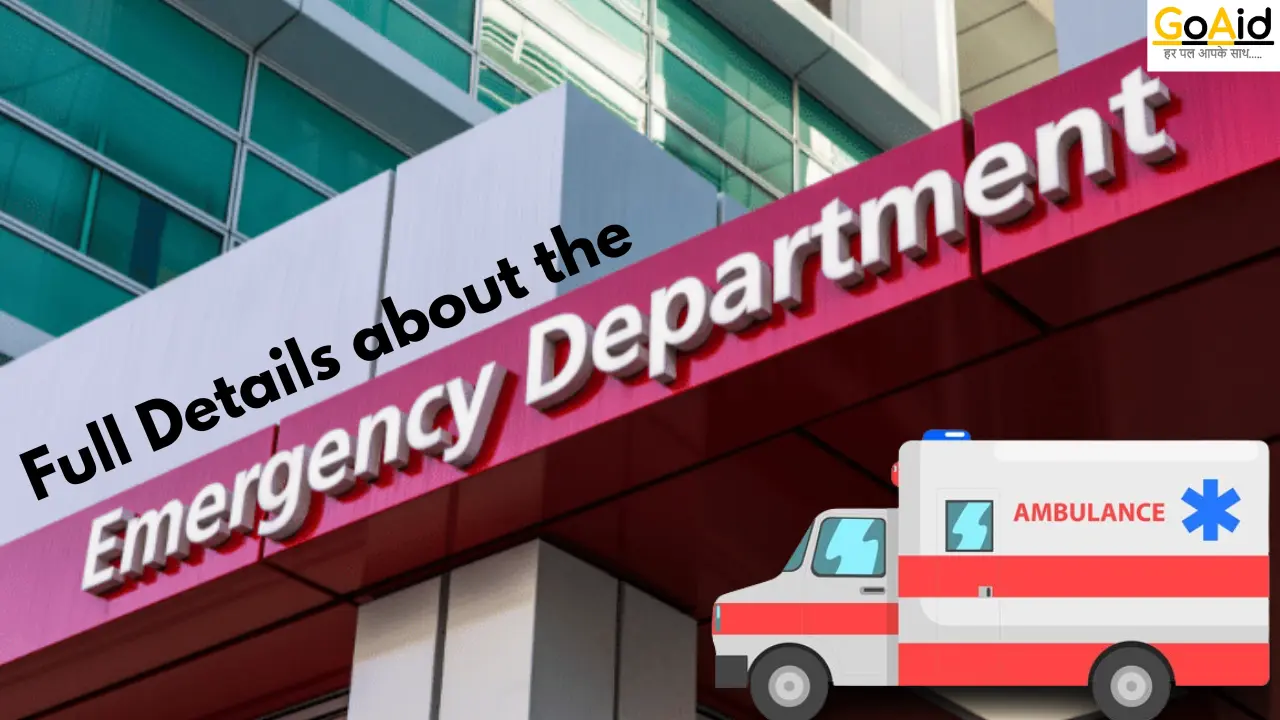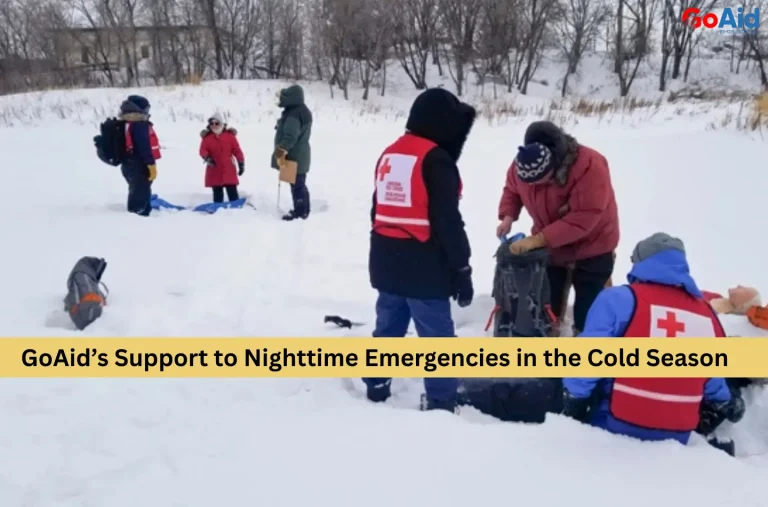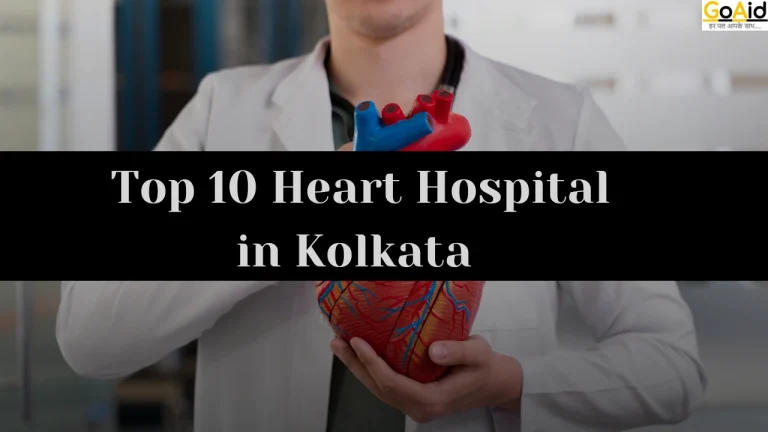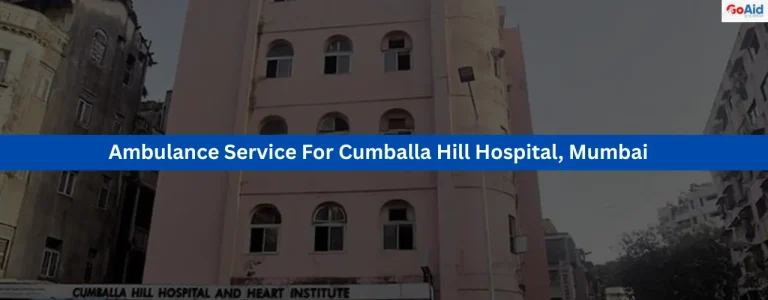At any moment, a person can feel the need for emergency medical services. This emergency medical service is in the Emergency Department of the Hospital. In hospitals, there is a variety of emergency departments and different types of emergency services. Knowing about them will help us to know more about the medical emergency and their specified solutions.
There are a lot of people who still searching for comprehensive details about the Emergency Department in Hospitals, if you are one of them, then read this blog to the end. In this blog, we have added comprehensive details about the Emergency Department in Hospitals including their services, triage system, type of emergency, common procedures followed in ED, Different types of technologies used in ED, Doctors in ED, and more over Specialized Emergency Department Units in Hospitals.
So, letŌĆÖs start
Comprehensive Details about Emergency Departments in Hospitals
YouŌĆÖll be getting comprehensive details about the Emergency Department in Hospitals below:
What is an Emergency Department?
The Emergency Department is a critical unit within a hospital that provides immediate medical attention for urgent and life-threatening conditions. Open 24/7, it handles a wide range of emergency services such as trauma care, heart attacks, strokes, and severe injuries. The Emergency Department in hospitals is staffed by trained physicians, nurses, and specialists who quickly assess, stabilize, and treat patients.
A triage system prioritizes cases based on urgency to ensure the most critical receive care first. This department plays a vital role in offering fast, life-saving interventions and stabilizing patients before transferring them to specialized care units if needed.
Read More: What are the rules and Regulations of ambulance in India?
Characteristics of Emergency Department
These are some of the key Characteristics of Emergency Departments in Hospitals:
1. 24/7 Operation
The Emergency Department operates continuously, providing access to critical care services at any hour. This ensures that patients with urgent medical conditions receive timely interventions, regardless of the time of day or night.
2. Triage System
The department employs a structured triage system to prioritize patient care based on the severity of their condition. This system ensures that those with life-threatening emergencies are treated first, optimizing the use of medical resources.
3. Multi-disciplinary Staff
A team of specialized healthcare professionals, including emergency physicians, nurses, surgeons, and consultants, works collaboratively to deliver comprehensive emergency services for a wide range of medical issues.
4. Rapid Response
The Emergency Department in hospitals is designed to provide swift medical care, focusing on quick assessment, diagnosis, and stabilization of patients to prevent complications and save lives.
5. Advanced Medical Equipment
Emergency departments are equipped with state-of-the-art medical tools, such as defibrillators, ventilators, and diagnostic imaging devices, enabling prompt and effective treatment of critical conditions.
6. Diverse Case Management
The department handles a broad spectrum of medical emergencies, ranging from trauma and cardiac arrests to strokes and respiratory issues, ensuring comprehensive care for all types of patients.
7. Coordination with Other Departments
The Emergency Department often works in close coordination with other hospital units, such as surgery, intensive care, and radiology, to provide seamless patient care and facilitate timely transfers.
8. Patient-Centered Care
The focus is on providing compassionate, patient-centered care, ensuring that individuals in distress are treated with dignity, respect, and empathy throughout their stay in the Emergency Department.
9. Preparedness for Mass Casualty Events
Emergency departments are trained to handle large-scale emergencies and disasters, such as accidents, natural disasters, and public health crises, with protocols in place to manage a surge in patients.
10. Use of Technology and Innovation
Modern Emergency Departments in hospitals integrate advanced technology, such as telemedicine, electronic medical records, and AI-driven diagnostics, to enhance patient care and improve operational efficiency in delivering emergency services.
Features of the Emergency Department
These are some of the key features of Emergency Department in any Hospital:
- Immediate Care: The Emergency Department provides immediate medical attention to patients with urgent or life-threatening conditions, ensuring timely interventions to stabilize health emergencies.
- Specialized Medical Teams: Staffed with highly trained professionals, including emergency physicians, nurses, and specialists, the department ensures comprehensive emergency services for a variety of critical conditions.
- State-of-the-art equipment: The department is equipped with cutting-edge technology such as defibrillators, ventilators, and diagnostic tools to enable accurate and swift diagnosis and treatment.
- Triage and Patient Prioritization: A structured triage system is used to categorize and prioritize patients based on the urgency of their medical condition, ensuring the most critical cases receive prompt attention.
- Integration with Hospital Units: The Emergency Department in hospitals is seamlessly connected to other hospital units like ICU, radiology, and surgery, enabling fast patient transfers for specialized care when needed.
- 24/7 Accessibility: The Emergency Department remains open and fully operational 24 hours a day, 365 days a year, to cater to emergency medical needs at any time.
- Crisis Preparedness: Equipped to handle mass casualty situations and large-scale emergencies, the department has protocols in place for disaster response, ensuring readiness to manage multiple patients in critical situations.
Services provided in Emergency Department
These are some of the common services provided in the Emergency Department of any hospital:
1. Trauma Care
Specialized for treating severe injuries from accidents, falls, or physical trauma. The Emergency Department is equipped with resources to handle cases like fractures, head injuries, and severe wounds. Trauma care teams stabilize the patient and provide immediate interventions to prevent further complications.
2. Cardiac Emergency Services
These services focus on managing life-threatening heart conditions such as heart attacks, arrhythmias, and cardiac arrest. The Emergency Department provides rapid diagnosis using electrocardiograms (ECG) and defibrillation to restore heart function.
Also Read: Difference between Dead Body Ambulance & Dead Body Freezer Box
3. Stroke Management
Specialized in identifying and treating strokes within the critical time window to minimize brain damage. Services include administering clot-dissolving drugs, CT scans, and coordinating immediate neurovascular care.
4. Respiratory Emergencies
The department handles cases like asthma attacks, pneumonia, or acute respiratory distress syndrome (ARDS). Emergency staff are trained to provide oxygen therapy, bronchodilators, and, when necessary, ventilatory support.
5. Severe Allergic Reactions (Anaphylaxis)
The Emergency Department in hospitals provides immediate treatment for severe allergic reactions through epinephrine injections, antihistamines, and airway management to prevent life-threatening complications like shock or asphyxiation.
6. Acute Pain Management
Emergency services also include pain management for conditions such as kidney stones, acute migraines, or severe burns. Pain relief is provided through medications or procedures like nerve blocks, ensuring patient comfort and stabilization.
7. Psychiatric Crises
Specialized in handling mental health emergencies such as suicidal behavior, severe anxiety attacks, or psychotic episodes. Patients are stabilized and assessed, with follow-up care coordinated with psychiatric specialists.
8. Poisoning and Overdose Treatment
The department offers emergency services for treating drug overdoses, poisoning, or toxic exposures through procedures like gastric lavage, activated charcoal, or specific antidotes.
9. Pediatric Emergency Care
Specialized for children with acute illnesses or injuries, pediatric emergency services cater to conditions like respiratory infections, fevers, or traumatic injuries. Specialized equipment and professionals trained in pediatric care ensure appropriate treatment for young patients.
10. Surgical Emergency Services
These services involve performing emergency surgeries for conditions like appendicitis, bowel obstructions, or trauma-related injuries. Emergency surgical services aim to prevent the deterioration of life-threatening conditions.
11. Burn Care
Specialized services for treating minor to severe burns, including wound cleaning, pain management, and critical care for extensive burn injuries.
12. Infectious Disease Management
The Emergency Department is equipped to handle acute infections, such as sepsis, severe bacterial or viral infections, and other communicable diseases, providing rapid diagnosis, isolation protocols, and immediate treatment.
Read More: Importance of Regular Health Check-Ups
Different Types of Emergency Departments
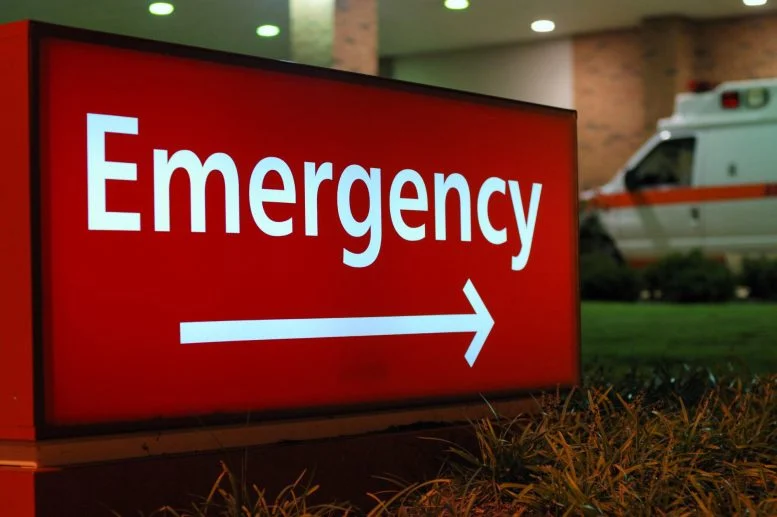
These are the key types of Emergency departments in Hospitals. We also have added their roles and common procedures:
1. General Emergency Department
Dedicated to: Treating a wide range of urgent and life-threatening conditions.
What happens here?
General emergency departments are designed to handle various medical emergencies, including trauma, heart attacks, strokes, respiratory distress, and acute injuries. Upon arrival, patients are triaged based on the severity of their condition, followed by diagnosis, stabilization, and treatment. These departments offer comprehensive emergency services for both adult and pediatric patients, with access to surgical units, radiology, and intensive care.
2. Pediatric Emergency Department
Dedicated to: Emergency care for infants, children, and adolescents.
What happens here?
The Pediatric Emergency Department specializes in diagnosing and treating medical and traumatic emergencies in children. Pediatric-trained doctors and nurses provide care for conditions like respiratory infections, fevers, trauma, and allergic reactions. Child-friendly equipment and environments help reduce anxiety, and the department coordinates with pediatric ICU units for critical cases.
3. Trauma Center
Dedicated to: Handling severe injuries resulting from accidents, violence, or disasters.
What happens here?
Trauma centers are specialized emergency departments equipped to treat critical trauma cases such as head injuries, internal bleeding, multiple fractures, and burns. They operate at various levels (I-IV), with Level I being the most comprehensive, offering 24/7 surgical care, advanced diagnostic services, and specialized trauma teams. Trauma surgeons and emergency physicians collaborate to provide life-saving interventions.
4. Cardiac Emergency Department
Dedicated to: Managing heart-related emergencies.
What happens here?
The Cardiac Emergency Department focuses on acute cardiac conditions like heart attacks, arrhythmias, and cardiac arrest. Patients receive rapid diagnosis through ECGs, blood tests, and imaging, followed by immediate treatments like thrombolysis, angioplasty, or defibrillation. These departments often work closely with cardiac care units to provide seamless treatment for heart patients.
5. Psychiatric Emergency Department
Dedicated to: Immediate mental health crises and psychiatric emergencies.
What happens here?
This department handles cases such as suicidal ideation, psychosis, severe anxiety attacks, and substance abuse-related emergencies. Psychiatric evaluations are conducted, and patients are stabilized. The focus is on preventing harm to the individual and others, with follow-up care involving coordination with inpatient psychiatric facilities for longer-term treatment.
6. Burn Center Emergency Department
Dedicated for: Specialized care for burn injuries.
What happens here?
Burn centers within the Emergency Department in hospitals are designed to provide immediate care for minor to severe burn injuries. Patients receive wound cleaning, fluid replacement, pain management, and specialized burn treatments. For severe cases, critical care is provided, and skin grafts or other surgical interventions may be required. The center coordinates with plastic surgeons for reconstructive procedures if needed.
Read More: Difference Between OPD And IPD: Comprehensive Guide
7. Stroke Center
Dedicated to: Rapid diagnosis and treatment of stroke patients.
What happens here?
Stroke centers offer specialized emergency services focused on the immediate treatment of ischemic and hemorrhagic strokes. Upon arrival, patients undergo diagnostic tests like CT scans and MRI to determine the cause and type of stroke. Treatments may include thrombolytic therapy or emergency surgery to remove clots or relieve pressure on the brain. Time is critical in these centers to minimize brain damage and improve outcomes.
8. Level I Trauma Center
Dedicated to: The highest level of trauma care for the most critical injuries.
What happens here?
Level I trauma centers are equipped to provide comprehensive care for all trauma-related emergencies, with 24-hour in-house surgical staff, advanced diagnostic equipment, and specialized units. These centers offer a full spectrum of care, including trauma surgery, neurosurgery, orthopedic surgery, and intensive care, along with rehabilitation services for recovering patients.
9. Geriatric Emergency Department
Dedicated to: Emergency care for elderly patients with age-related conditions.
What happens here?
This department is tailored to the unique needs of older adults, managing conditions such as falls, fractures, heart problems, strokes, and chronic illness exacerbations. Staff are trained to address the complexities of geriatric care, focusing on stabilizing patients while considering age-related frailty, medication management, and coordination with geriatric specialists.
10. Mobile Emergency Department
Dedicated to: Emergency care in field settings, during disasters, or in rural areas.
What happens here?
Mobile emergency departments are temporary, fully equipped medical units designed to provide emergency services during mass casualty events, natural disasters, or in remote locations where traditional hospitals are not accessible. These mobile units offer triage, basic surgical procedures, trauma care, and stabilization before transferring patients to permanent healthcare facilities.
Know More: Steps India Is Taking to Ensure the Safety of Women | Explained
Roles of Emergency Departments in Hospitals

These are the key Roles of the Emergency Department in Hospitals:
1. Immediate Care for Critical Conditions
The Emergency Department in hospitals provides urgent care for life-threatening conditions such as heart attacks, strokes, and severe injuries, ensuring timely medical intervention.
2. 24/7 Availability
The Emergency Department operates around the clock to offer continuous care, ensuring that patients receive medical attention at any time, day or night, regardless of the severity of their condition.
3. Triage and Prioritization
The emergency Department implements a triage system to assess and prioritize patients based on the urgency of their medical needs, ensuring that the most critical cases receive immediate attention.
4. Comprehensive Diagnostic Services
Emergency Department offers rapid diagnostic services, including imaging (CT scans, X-rays) and laboratory tests, to quickly identify and address the underlying causes of emergency conditions.
5. Coordination with Other Hospital Units
The Emergency Department works closely with other departments such as surgery, ICU, and radiology to facilitate seamless patient care and transfer for specialized treatment as needed.
6. Management of Mass Casualty Incidents
Emergency Departments are equipped to handle large-scale emergencies and disasters, the department plays a crucial role in managing multiple patients and coordinating disaster response efforts.
7. Pre-Hospital and Emergency Transportation
The emergency Department coordinates with ambulance services to ensure timely and safe transportation of patients to the hospital, providing critical care en route when necessary.
8. Patient Stabilization and Transfer
The emergency Department focuses on stabilizing patients before transferring them to specialized care units or other facilities for continued treatment, ensuring that patients are in the best possible condition for further care.
Also Read: Book Free Ambulance Service in Delhi
Benefits of Emergency Departments in Hospitals
These are the key benefits of Emergency Departments in Hospitals:
1. Life-Saving Interventions
Emergency Department provides rapid and effective treatment for life-threatening conditions, significantly improving the chances of survival and reducing mortality rates.
2. Accessible Care
Emergency Department ensures that emergency medical services are available 24/7, providing access to critical care regardless of the time of day or night.
3. Specialized Expertise
Emergency Department employs a team of highly trained medical professionals, including emergency physicians, nurses, and specialists, who are equipped to handle a wide range of medical emergencies with expertise.
4. Efficient Triage and Care Delivery
Emergency Department utilizes a triage system to prioritize patients based on the severity of their condition, optimizing the allocation of medical resources and ensuring timely care for the most critical cases.
5. Integrated Medical Services
Emergency Department offers comprehensive diagnostic and treatment services within the hospital, including imaging, laboratory tests, and surgical interventions, facilitating a holistic approach to emergency care.
Also Read: How Much Oxygen Does a Human Need
6. Preparedness for Disasters
Emergency Department is equipped to manage large-scale emergencies and natural disasters, the department plays a key role in disaster preparedness and response, ensuring community resilience during crises.
7. Patient Comfort and Support
Emergency Department provides immediate care in a high-stress environment, with a focus on patient comfort and emotional support, helping to alleviate anxiety and improve the overall patient experience.
8. Coordination with External Services
Emergency Department works in collaboration with external emergency services, such as ambulances and first responders, to ensure effective and coordinated care from the point of initial contact through hospital admission.
Know More: Free Ambulance Service for Pregnant Women in India
What is a Triage System?
The triage system is a critical process used in emergency departments and other medical settings to prioritize patients based on the severity of their medical conditions. The goal of triage is to ensure that patients with the most urgent needs receive prompt and appropriate care while managing resources efficiently. HereŌĆÖs a detailed explanation:
How the Triage System Works
1. Initial Assessment
When patients arrive at the Emergency Department, they undergo an initial assessment conducted by a triage nurse or medical professional. This assessment involves asking questions about symptoms, medical history, and performing a quick physical examination.
2. Categorization
Based on the initial assessment, patients are categorized into different priority levels. These levels are typically based on the urgency of their condition and the potential for deterioration. Common triage categories include:
- Immediate (Red): Life-threatening conditions requiring immediate intervention (e.g., cardiac arrest, severe trauma).
- Urgent (Yellow): Serious conditions that require prompt attention but are not immediately life-threatening (e.g., moderate chest pain, significant fractures).
- Non-Urgent (Green): Conditions that are less severe and can wait for care (e.g., minor injuries, mild fever).
- Deceased/Expectant (Black): Patients who are deceased or have conditions so severe that survival is unlikely.
3. Prioritization
The triage system ensures that patients with the most critical conditions are seen and treated first. This prioritization helps manage the flow of patients and allocate medical resources effectively, especially in high-demand situations.
4. Ongoing Reassessment
As patients wait for treatment, their conditions may change. The triage system involves ongoing reassessment to adjust priority levels as needed. If a patient’s condition worsens, they may be re-triaged to a higher priority level.
5. Resource Allocation
The triage process helps allocate limited medical resources, such as staff, equipment, and treatment rooms, to ensure that the most critical patients receive the necessary care promptly.
Benefits of the Triage System
- Efficient Management: Ensures that patients are treated in order of urgency, preventing delays in care for those with life-threatening conditions.
- Improved Outcomes: By prioritizing care based on the severity of conditions, the system helps improve patient outcomes and reduce mortality rates.
- Optimal Resource Use: Helps in managing hospital resources effectively, ensuring that medical staff and equipment are utilized where they are most needed.
Read More: The Ambulances in India ŌĆō Types and Uses
Common Procedure for ED in Hospitals
The Emergency Department (ED) in hospitals is a high-stress, fast-paced environment where medical professionals must quickly assess and treat a wide range of urgent conditions. The procedures followed in the ED are designed to provide rapid, effective care and ensure that patients receive the appropriate treatment based on the severity of their condition. HereŌĆÖs a detailed overview of the common procedures:
1. Triage
Purpose: To prioritize patients based on the urgency of their medical conditions.
Process: Patients are assessed upon arrival, and their conditions are categorized into different urgency levels (e.g., immediate, urgent, non-urgent, deceased/expectant). This system ensures that those with the most critical needs receive prompt attention.
2. Initial Assessment
Purpose: To gather essential information about the patientŌĆÖs condition and history.
Process: A nurse or physician performs a quick evaluation, including taking vital signs (e.g., blood pressure, heart rate, temperature), asking about symptoms, and obtaining a brief medical history. This helps in forming a preliminary diagnosis.
3. Diagnostic Testing
Purpose: To identify the underlying causes of symptoms and guide treatment decisions.
Process: Diagnostic tests may include:
- Imaging Studies: X-rays, CT scans, MRI, and ultrasound to visualize internal structures and detect injuries or abnormalities.
- Laboratory Tests: Blood tests, urinalysis, and other assays to assess organ function, detect infections, or measure biomarkers.
4. Stabilization and Treatment
Purpose: To manage and stabilize patientsŌĆÖ conditions.
Process: Based on the triage category and initial assessment, treatment may involve:
- Medications: Administering drugs to manage pain, control infections, or stabilize vital functions.
- Procedures: Performing emergency procedures such as intubation, suturing wounds, or administering intravenous fluids.
- Monitoring: Continuous monitoring of vital signs and response to treatment to ensure stability.
5. Consultations and Specialist Referrals
Purpose: To provide specialized care if needed.
Process: If a patientŌĆÖs condition requires expertise beyond the ED, consultations with specialists (e.g., cardiologists, and surgeons) are arranged. Specialist input may be needed for complex cases or surgical interventions.
Also Read: Common Causes of Ambulance Delays in India
6. Patient Education and Discharge Planning
Purpose: To prepare patients for follow-up care and ensure they understand their treatment.
Process: Patients receive instructions on managing their condition at home, including medication guidelines, follow-up appointments, and when to seek further medical help. Discharge planning may also involve coordinating with primary care providers or arranging home care services if necessary.
7. Admission or Transfer
Purpose: To provide continued care if the patientŌĆÖs condition requires hospitalization.
Process: Patients who need further treatment are admitted to the hospital or transferred to specialized units (e.g., ICU, orthopedic ward). The ED team coordinates with inpatient units to ensure a smooth transition.
8. Documentation and Record-Keeping
Purpose: To maintain accurate and comprehensive medical records.
Process: Detailed documentation of the patientŌĆÖs assessment, diagnosis, treatment, and follow-up instructions is recorded in the electronic medical record (EMR) system. This ensures continuity of care and legal compliance.
9. Crisis and Disaster Management
Purpose: To respond effectively to large-scale emergencies or disasters.
Process: The ED is equipped to handle mass casualties, such as natural disasters or major accidents. Procedures include activating disaster response protocols, managing multiple patients simultaneously, and coordinating with external agencies and resources.
10. Quality Control and Review
Purpose: To maintain high standards of care and improve ED operations.
Process: Regular reviews and audits are conducted to assess the quality of care, identify areas for improvement, and implement changes as needed. This may involve analyzing patient outcomes, reviewing case studies, and updating protocols.
Read More: Standard Protocols for Paramedics to Follow
Specialized Emergency Units in Hospitals
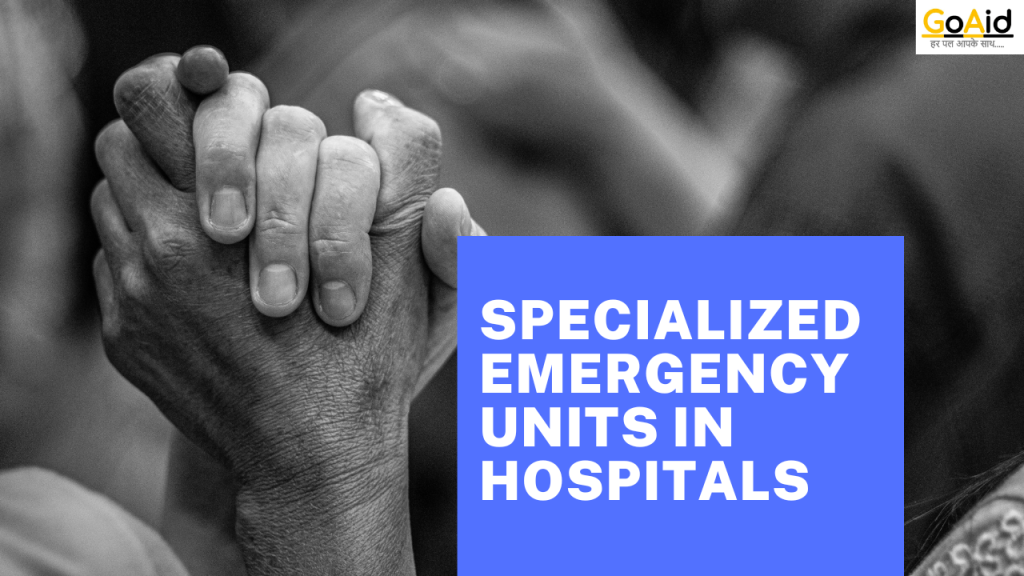
Specialized emergency units within hospitals are dedicated facilities designed to provide focused and advanced care for specific types of medical emergencies. These units enhance the overall capabilities of the hospitalŌĆÖs Emergency Department (ED) by offering specialized expertise, equipment, and protocols tailored to various critical conditions. HereŌĆÖs a comprehensive overview of some key specialized emergency units:
1. Trauma Center
- Purpose: To provide comprehensive care for patients with severe and complex injuries resulting from accidents, violence, or natural disasters.
- Features:
- Levels of Care: Trauma centers are classified into different levels (I-IV) based on the extent of services they provide. Level I centers offer the highest level of trauma care, including 24/7 availability of surgeons and specialists, advanced diagnostic equipment, and extensive rehabilitation services.
- Services: This unit of ED includes emergency surgical care, critical care, and specialized treatment for trauma-related injuries such as head trauma, multiple fractures, and internal bleeding.
- Staffing: This unit of ED includes trauma surgeons, emergency physicians, orthopedic surgeons, neurosurgeons, and specialized trauma nurses.
2. Cardiac Care Unit
- Purpose: To provide immediate and specialized care for patients with acute cardiac conditions.
- Features:
- Equipment: This unit of ED is equipped with advanced cardiac monitoring devices, defibrillators, and cardiac catheterization labs.
- Services: This unit of ED includes emergency management of heart attacks, arrhythmias, and heart failure. Services also include thrombolysis (clot-busting medications) and percutaneous coronary interventions (PCI).
- Staffing: This unit of ED includes cardiologists, cardiac surgeons, and specialized cardiac nurses trained in managing acute cardiac conditions.
3. Stroke Unit
- Purpose: To offer specialized care for patients experiencing strokes, ensuring timely intervention to minimize brain damage and improve recovery outcomes.
- Features:
- Services: This unit of ED offers rapid diagnosis using imaging techniques (CT scans, MRIs) and administration of thrombolytic therapy for ischemic strokes. The unit also provides intensive monitoring and management of stroke complications.
- Protocols: This unit of ED includes a stroke care protocol that ensures adherence to guidelines for stroke treatment and management.
- Staffing: This unit of ED includes neurologists, neurosurgeons, stroke nurses, and rehabilitation specialists.
4. Pediatric Emergency Unit
- Purpose: To provide emergency care specifically for infants, children, and adolescents with urgent or life-threatening conditions.
- Features:
- Child-Friendly Environment: This unit of ED includes specialized equipment and a child-friendly environment to reduce anxiety and cater to pediatric needs.
- Services: This unit of ED includes the management of pediatric emergencies such as respiratory infections, trauma, and congenital conditions. Provides age-appropriate care and treatment.
- Staffing: This unit of ED includes pediatric emergency physicians, pediatric nurses, and child life specialists trained in pediatric care.
5. Burn Unit
- Purpose: To offer specialized care for patients with burn injuries, from minor burns to severe, life-threatening cases.
- Features:
- Services: This unit of ED includes wound care, pain management, fluid resuscitation, and surgical interventions such as skin grafts. The unit also focuses on infection control and rehabilitation.
- Equipment: This unit of ED is equipped with specialized burn care tools and resources for wound management and treatment.
- Staffing: This unit of ED includes burn surgeons, plastic surgeons, burn nurses, and rehabilitation therapists.
6. Geriatric Emergency Unit
- Purpose: To address the unique needs of elderly patients presenting with acute medical conditions or emergencies.
- Features:
- Services: This unit of ED includes management of conditions such as falls, fractures, and chronic disease exacerbations under their services. The unit also focuses on addressing age-related frailty and polypharmacy issues.
- Protocols: This unit of ED includes tailored protocols for geriatric care, focusing on comprehensive assessments and coordinated care plans.
- Staffing: This unit of ED includes geriatricians, emergency physicians with geriatric training, and nurses with expertise in elderly care.
7. Psychiatric Emergency Unit
- Purpose: To provide immediate care for individuals experiencing severe mental health crises.
- Features:
- Services: This unit of ED includes crisis intervention, psychiatric evaluations, and stabilization for conditions such as suicidal ideation, severe anxiety, and psychotic episodes.
- Protocols: This unit of ED includes safety protocols for managing potentially volatile situations and ensuring patient security.
- Staffing: This unit of ED includes psychiatrists, psychiatric nurses, social workers, and mental health counselors.
8. Mobile Emergency Unit
- Purpose: To deliver emergency medical care in field settings, during disasters, or in areas with limited access to traditional medical facilities.
- Features:
- Equipment: This unit of ED includes portable medical equipment, emergency supplies, and communication tools for on-site care.
- Services: This unit of ED provides triage, stabilization, and basic emergency care in situations such as natural disasters, large-scale accidents, or remote locations.
- Staffing: This unit of ED includes emergency medical technicians (EMTs), paramedics, and sometimes specialized medical personnel for on-site care.
Also Read: Full Details About Heart Care, Facts, Type, Problems, & Treatment
Specialized Doctors for Emergency Departments & their Job
In the Emergency Department (ED), specialized doctors play critical roles in managing a diverse range of urgent medical conditions. Each specialist brings unique expertise to the ED, ensuring comprehensive care for patients with complex and varied needs. HereŌĆÖs an overview of the specialized doctors commonly found in the ED and their respective roles:
1. Emergency Medicine Physician
- Role
- Primary Care Provider in ED: Emergency medicine physicians are the core doctors in the ED, responsible for diagnosing and managing a wide array of acute medical conditions and injuries.
- Responsibilities: They perform initial assessments, order diagnostic tests, initiate treatments, and stabilize patients. They also make decisions about patient admission, discharge, or transfer to specialized units.
- Skills
- Proficient in rapid assessment and decision-making.
- Skilled in performing emergency procedures such as intubation, central line placement, and chest tube insertion.
2. Trauma Surgeon
- Role
- Specialist in Trauma Care: Trauma surgeons handle patients with severe injuries resulting from accidents, violence, or disasters. They are integral to trauma centers, especially Level I facilities.
- Responsibilities: They perform surgical interventions for trauma-related injuries, such as internal bleeding, fractures, and organ damage. They also lead trauma teams during mass casualty incidents.
- Skills
- Expertise in trauma surgery, including emergency laparotomy and thoracotomy.
- Ability to manage complex trauma cases and coordinate multidisciplinary care.
3. Cardiologist
- Role
- Expert in Cardiac Emergencies: Cardiologists are consulted for patients with acute cardiac conditions, such as myocardial infarction (heart attacks) and arrhythmias.
- Responsibilities: They perform diagnostic tests like electrocardiograms (ECGs), recommend and oversee treatments like thrombolysis or angioplasty, and provide follow-up care for cardiac conditions.
- Skills
- Specialized knowledge in cardiac care and intervention.
- Proficiency in managing acute and chronic cardiac conditions.
4. Neurologist
- Role
- Specialist in Neurological Emergencies: Neurologists are involved in the management of patients with neurological emergencies, such as strokes, seizures, and acute neurological deficits.
- Responsibilities: They perform neurological assessments, order and interpret brain imaging studies, and provide treatment for conditions like ischemic strokes or seizures.
- Skills
- Expertise in neurological evaluation and acute management of brain disorders.
- Knowledge of thrombolytic therapy and other stroke interventions.
5. Pediatrician
- Role
- Specialist in Pediatric Emergencies: Pediatricians in the ED manage acute conditions specific to children and adolescents, including infections, trauma, and congenital issues.
- Responsibilities: They provide age-appropriate care, perform pediatric assessments, and work with pediatric subspecialists for further care if needed.
- Skills
- Proficiency in pediatric emergency care and child-specific procedures.
- Ability to communicate effectively with children and their families.
Know More: How to relieve back pain during Pregnancy
6. Orthopedic Surgeon
- Role
- Specialist in Musculoskeletal Injuries: Orthopedic surgeons are consulted for patients with fractures, dislocations, and other musculoskeletal injuries.
- Responsibilities: They perform surgical interventions for fractures, manage complex joint injuries, and provide follow-up care for orthopedic conditions.
- Skills
- Expertise in orthopedic trauma and surgical techniques.
- Knowledge of fracture management and joint stabilization.
7. Psychiatrist
- Role
- Expert in Psychiatric Emergencies: Psychiatrists address mental health crises in the ED, including severe anxiety, depression, and psychotic episodes.
- Responsibilities: They perform psychiatric evaluations, provide immediate crisis intervention, and develop treatment plans for mental health conditions.
- Skills
- Specialized knowledge in managing acute psychiatric conditions.
- Ability to handle crisis situations and coordinate with mental health services.
8. Burn Specialist
- Role
- Expert in Burn Injuries: Burn specialists focus on the treatment of patients with burn injuries, from minor to severe cases.
- Responsibilities: They provide comprehensive burn care, including wound management, fluid resuscitation, and surgical interventions like skin grafts.
- Skills
- Expertise in burn care and management of burn-related complications.
- Proficiency in advanced burn treatment techniques and rehabilitation.
9. Geriatrician
- Role
- Specialist in Elderly Care: Geriatricians manage acute conditions in elderly patients, considering the complexities of aging and multiple comorbidities.
- Responsibilities: They perform comprehensive assessments of elderly patients, address age-related health issues, and coordinate with other specialists for comprehensive care.
- Skills
- Expertise in managing the health issues unique to older adults.
- Ability to address frailty and polypharmacy in geriatric patients.
Also Read: Peptic Ulcers: Causes, Symptoms, and Effective Treatments
Conclusion to the Emergency Department in Hospitals
In conclusion, the Emergency Department (ED) in hospitals plays a crucial role in delivering immediate and specialized care to patients with urgent and critical conditions. We have provided comprehensive details about various components of the ED, including its essential services, the triage system that prioritizes patient care, and the common procedures that ensure effective treatment.
Also, the blog highlighted the specialized emergency units tailored for specific medical emergencies, the role of advanced technology in enhancing care, and the specialized doctors who bring their expertise to manage complex cases.
Understanding the deepness of the ED helps in recognizing the dedication and efficiency required to handle emergencies effectively. If you have any further questions or need additional information related to the Emergency Department or any other aspect covered in this blog, please feel free to leave your queries in the comment box. We are here to provide the answers and support you need.

